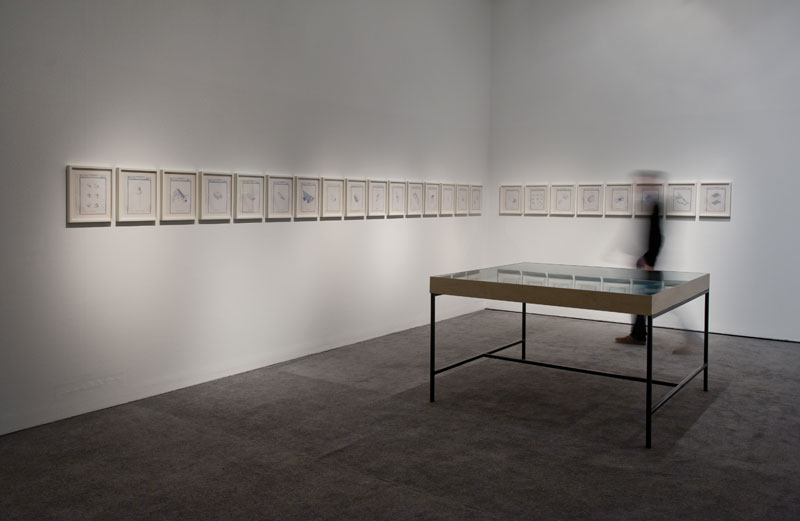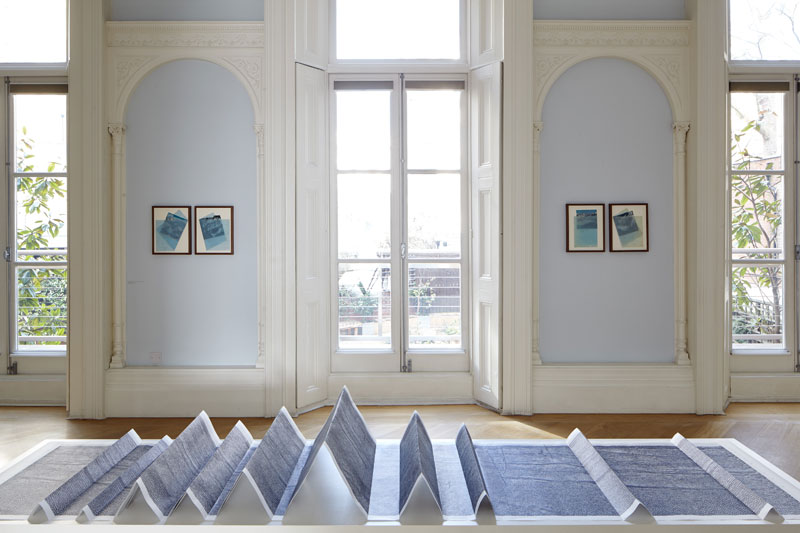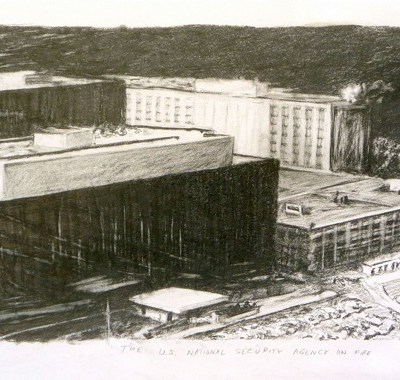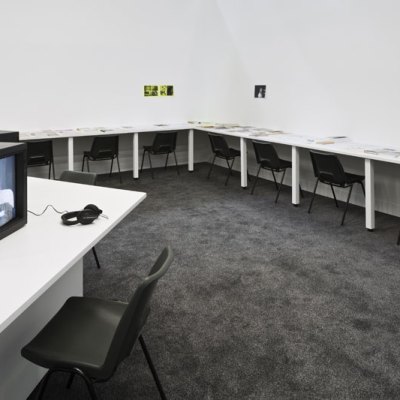At the centre of Hajra Waheed’s exhibition at BALTIC stands a temporary wall with a narrow slot cut into it. Propped inside is a small wooden block painted black positioned beneath a spotlight. ‘It looks like there should be something there’, says a passing visitor. And he’s right: it’s as if the work has been redacted and all that remains is blankness and mystery. It’s also a comment that could apply to many works by this young Canadian artist, at BALTIC and in Waheed’s other current solo show at the Mosaic Rooms in London. Both exhibitions are full of allusive and enigmatic fragments, scraps of paper and cropped images. This is contemporary art as classified information.
Waheed was born in Calgary in 1980 and is now based in Montréal, but spent her youth in the Persian Gulf, living in a gated community controlled by the mega oil company Saudi ARAMCO. The tight restrictions this environment entailed – especially the prohibition on photography and filming – might explain her particular fascination with surveillance and secrecy.
Photo: Colin Davison © 2016 BALTIC

The BALTIC show is called ‘The Cyphers’, an apt title given its array of codes, plans and coordinates that evoke both Cold War politics and contemporary drone strikes. There are drawings of electrical antennae and fuel cells; a dusty monitor shows grainy video footage of a parachutist landing at sea; vitrines are filled with photographs and collages of satellite imagery. Aerial Studies (2012) is a series of eight unexposed polaroids that act as canvases for ink drawings detailing potential targets (office buildings, a health centre, suburban streets). A long exposure photograph of the night sky extends across a wall, the celestial blips and bodies it depicts offering further data to be analysed.
On a low plinth at BALTIC lies a series of objects and documents – metallic fragments that recall bomb shards, and scraps of plans and photos. Such detritus encourages our own questions, stories and associations. What is the significance of the mustachioed man whose image is paper-clipped to one file? Why has the outline of a giant telescope been cut out of another image? Who is the mysterious ‘R. E. Moon’ who has signed all these official documents? In a sense, this wild speculation suggests the sheer madness of surveillance. When everything may hold importance, nothing can ever be discarded. A tiny, unexpected detail may reveal hidden truths or vital strategic information.
Hajra Waheed, ‘The Cyphers’ at BALTIC Centre for Contemporary Art, Gateshead. Photo: Colin Davison © 2016 BALTIC

The displays at the Mosaic Rooms focus on Sea Change, a multifaceted ‘visual novel’ that Waheed began in 2011. Once again, there’s no clear narrative present, beyond a discernible interest in geography and geology. A lengthy scroll depicts seismographic patterns and is folded to emphasise its own topography; graphite drawings feature gems and the tools for mining them; collages show mountains and glaciers. In its mapping of space via tracing paper, graphs and grids, Sea Change is reminiscent of Rita Donagh’s early work, while its archival approach also brings to mind Emily Jacir’s practice. Waheed has created an intimate fictional world, largely devoid of human characters, which demands that a viewer piece together fragmentary evidence. In the case of A Short Film (1/331) (2014), two small wooden steps are positioned in front of a shelving unit housing slides, as if to encourage our tentative strides towards comprehension.
‘Sea Change – Chapter 1: Character 1, In the Rough’, Hajra Waheed. Photo courtesy of The Mosaic Rooms

Most affecting of all are two recent pencil drawings – untitled like many of Waheed’s works – that are framed together and tucked into the corner of the main gallery space at the Mosaic Rooms. They depict the delicate branches of a tree, a complex, ethereal network that emphasises Waheed’s interest in intricate constructions. Underneath the second drawing, in faint white ink, is written: ‘Forgive these confrontations with life’s jagged edges’. It’s an unwarranted apology for a strange and evocative body of work.
‘Hajra Waheed: The Cyphers’ is at BALTIC Centre for Contemporary Art, Gateshead, until 30 May.
‘Hajra Waheed: Sea Change – Chapter 1: Character 1, In the Rough’ is at the Mosaic Rooms, London, until 21 May.



